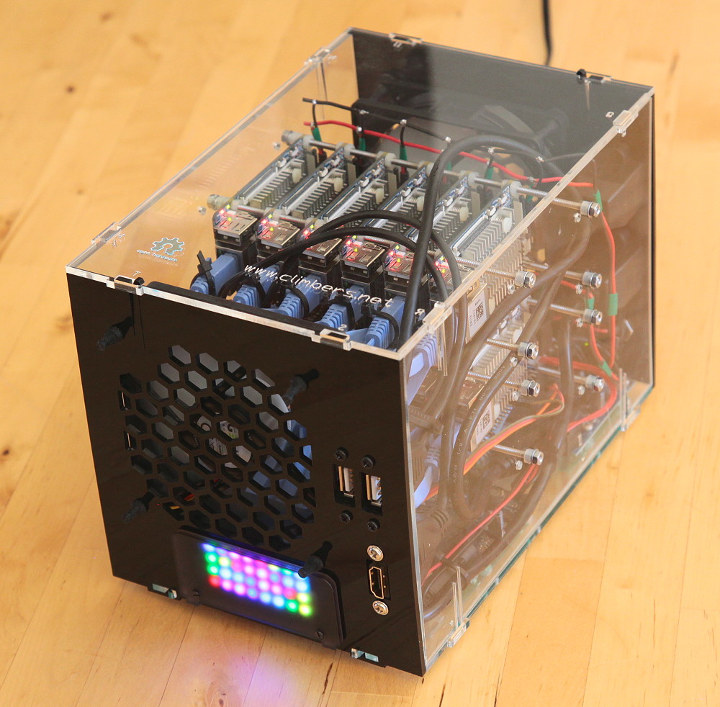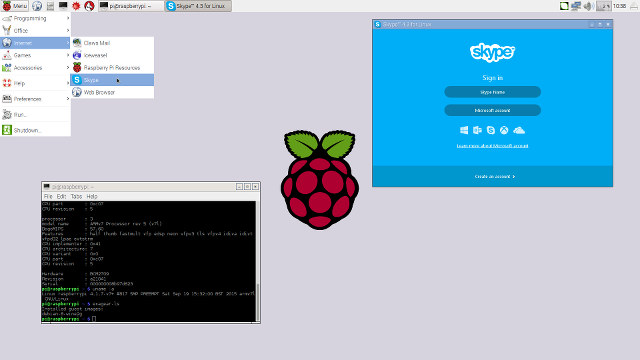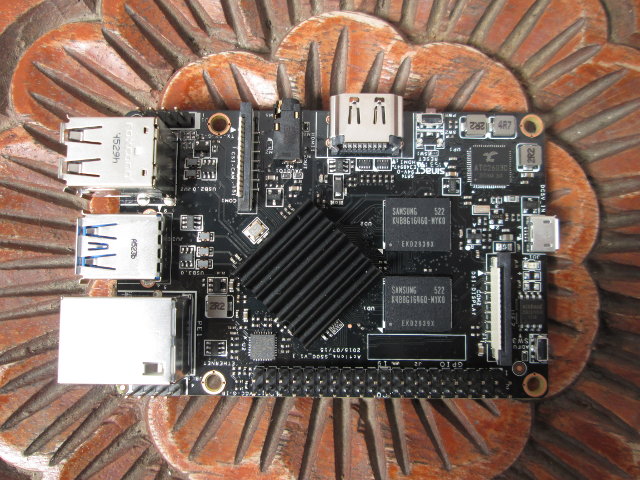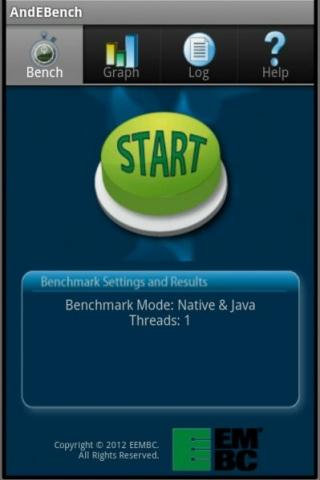Nick Smith has been messing around with clusters made of Arm boards for several years starting with Raspberry Pi boards, including a 5-node RPI 3 cluster, before moving to other boards like Orange Pi 2E, Pine A64+, or NanoPC-T3. His latest design is based on twelve NanoPi Fire3 boards with 8 cores each, bringing the total number of cores to 96. The platform may not be really useful for actual HPC applications due to limited power and memory, but can still be relied upon for education and development, especially it’s easily portable. Nick also made some interesting points and discoveries. It’s pretty with shiny blinking LEDs, and what looks like proper cooling, and the cluster can deliver 60,000 MFLOPS with Linpack which places it in the top 250 faster computers in the world! That’s provided we travel back in time to year 2000 through 🙂 By today’s standard, it would […]
Run x86 Linux and Windows applications in Raspberry Pi and other ARM Linux Devices with Exagear
A few weeks ago, I finally decided to buy a Raspberry Pi 2 board as it could always be useful for some testing, at least for comparison purposes. I ended up buying it from Ebay for $40, as it’s $3 to $5 more expensive locally. Nevertheless, I was not sure what I’ll use it first for, but after seeing a tweet for Exagear Desktop software that allows ARM boards to run x86 Linux or Windows applications, the latter through wine. The program is available for Raspberry Pi, Raspberry Pi 2, and ARMv7 devices for $19.95 to $29.95. I asked for a version for testing purposes, and I was given a Google Drive link to download Exagear for Raspberry Pi 2, as well as a 3-month trial key. Installation is very easy. I started by downloading and installing Raspbian Jessie the usual way on a 32GB micro SD card. It went […]
Linux Quick Start Guide for Roseapple Pi Board based on Actions Semi S500 Processor
Roseapple Pi is a development board powered by Actions Semi S500 processor with 2GB RAM, a USB 3.0 port and more, that is based on Actions Semi Bubblegum-S500 reference design also used by Lemon Pi board. The team behind the project sent me an early sample to try it out. I’ll take some pictures, before explaining how to install and setup Debian 8.1, and how to build and run your own minimal image from source. These instructions should also work for Lemon Pi and LeMaker Guitar boards. Roseapple Pi Photos I received the board in a bubble envelope with a thank you letter, and the board itself in an anti-static bag. No other accessories were provided. Ports, connectors, and headers from top left counter-clockwise: 4-pin UART console, two USB 2.0 ports, one USB 3.0 port, 10/100 Ethernet, a 40-pin Raspberry Pi comptabile header, a MIPI DSI connected, a micro USB […]
List of Android Benchmarks, Optimizations Results & Benchmarks Analysis
Linaro Connect Europe occurred in Copenhagen on Oct. 29 – Nov. 2 2012 (LCE12) and included 3 mini-summits about Android, big.LITTLE and ARMv8. Linaro has recently posted the presentation slides and I’ll have a look at a few of those slides in details and try to post information that I feel can be interesting. Today. I’ll go over the “Benchmarking and Optimization Opportunities” slides, where we can learn which Android Benchmarks Linaro use, how they’ve decreased benchmark results variance, which parts of the system are actually tested by benchmarks (profiling), and what they plan to do to further optimize Android on ARM. When I do some reviews, I usually simply use Antutu and Quadrant benchmarks to assess the performance of the devices, but Linaro uses many more benchmarks which I’ll list below. I’ll provide 2 links for each benchmark. The first link is to the official website and the other […]






